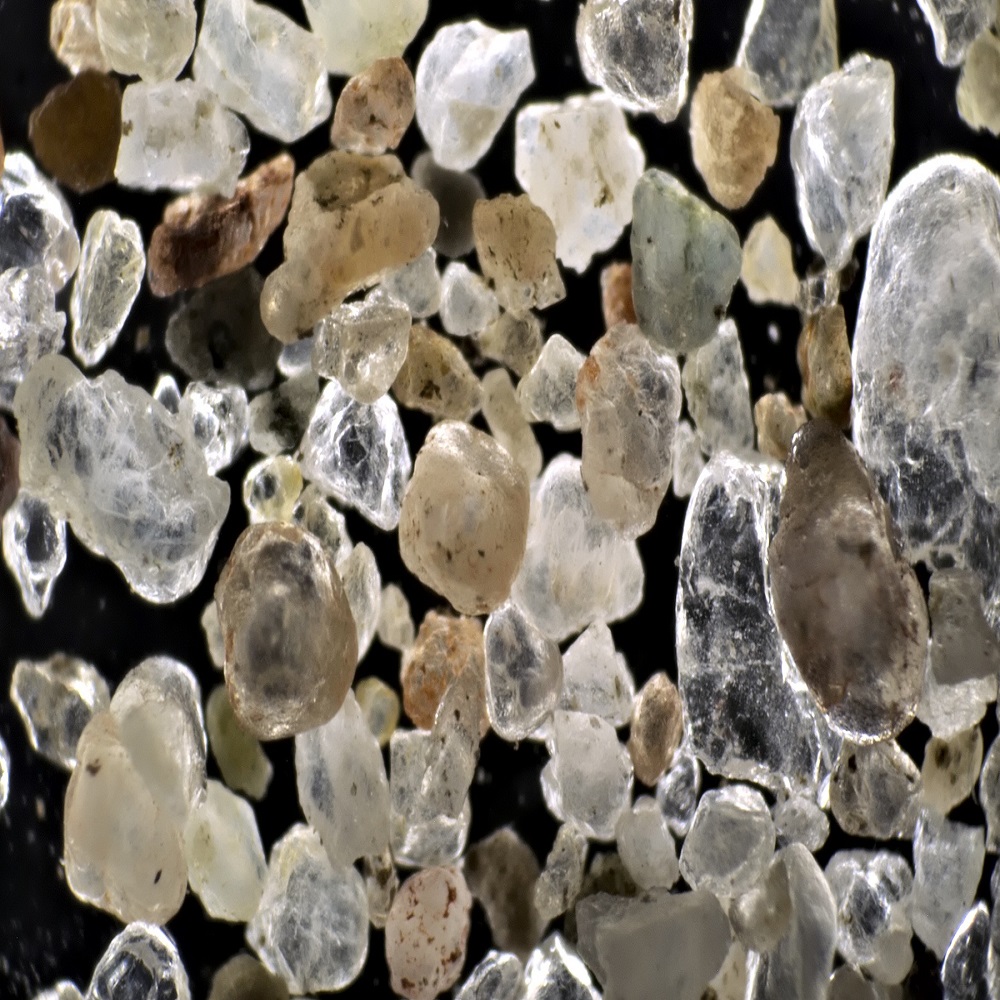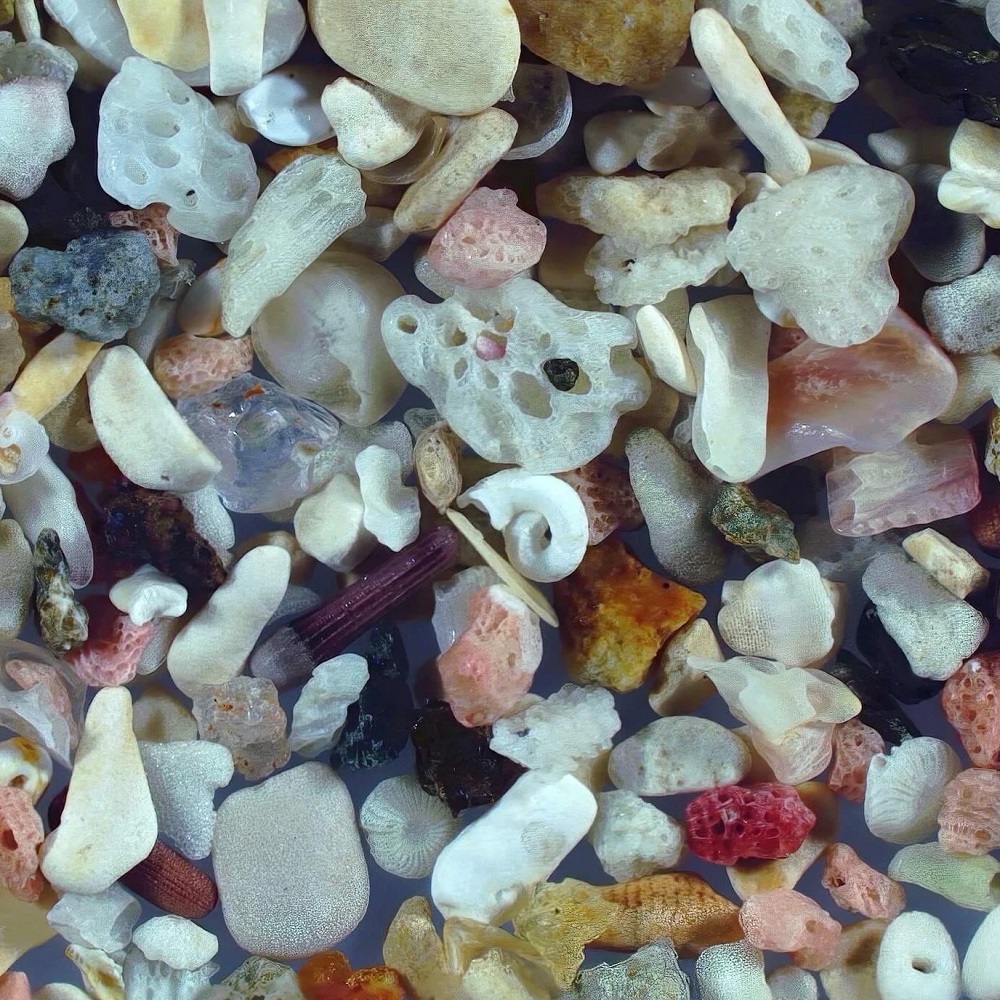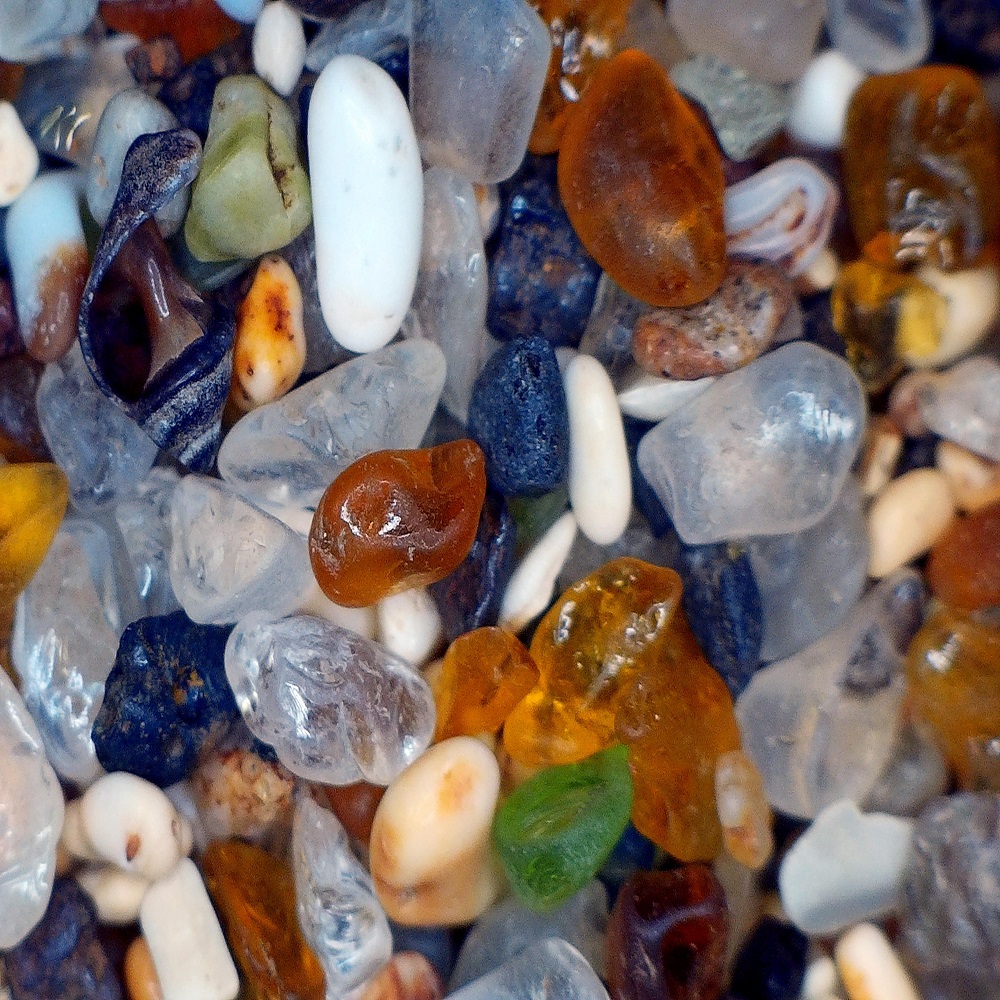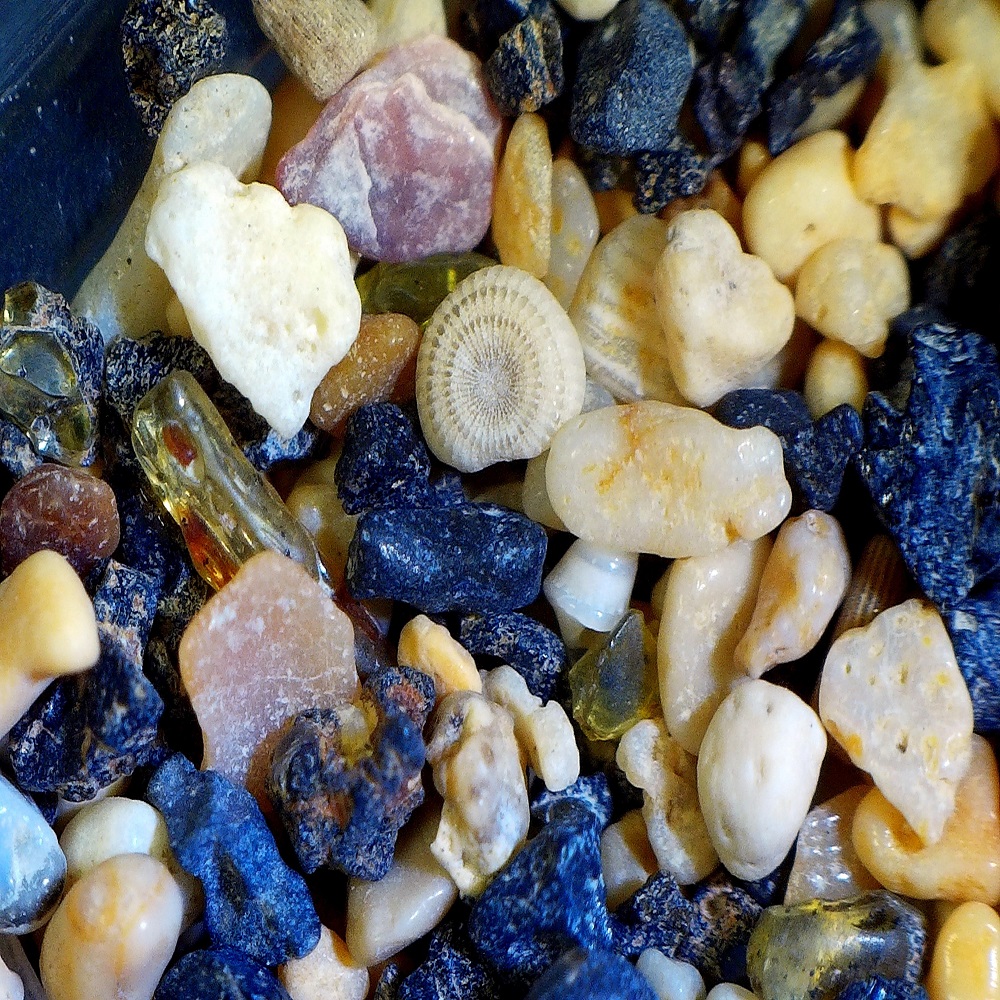What is Sand: A Brief Overview
Sand is a natural substance found on beaches, deserts, and riverbeds. It consists of small particles of rocks and minerals. Over time, these particles break down through weathering and erosion. Wind, water, and ice shape and sort them into the fine grains we recognize as sand. The color and texture of sand can vary widely. This depends on the types of rocks from where sand originates and the conditions in which it forms.
Most typically, people associate sand with the golden beaches that many crave during vacation times. However, sand can be much more diverse. For example, volcanic regions can produce dark, coarse sand. Meanwhile, tropical areas might have very fine, white sand. Sand serves not only as a place to lay under the sun but also as a home for various organisms. It plays key roles in natural processes such as filtration and providing stability to the ground.
When we talk about ‘sand under a microscope’, we reveal a whole new level of understanding. Each grain of sand tells a story of geological history and the journey it has undergone. Under the microscope, these tiny particles showcase a complex and beautiful array of shapes, sizes, and patterns. Some grains may be angular and sharp, others rounded and smooth. It’s this microscopic view that unveils the hidden mysteries of common sand, transforming our simple understanding into a deeper appreciation of its role on Earth.

The Composition of Sand: A Microscopic Perspective
When viewed through a microscope, sand reveals its varied composition. It is not just a single entity but a collection of many minerals and rock fragments. The most common mineral in sand is quartz, known for its hardiness and resistance to weathering. Other common components include feldspar and mica. However, every sample of sand can tell a different story, with unique mixes of minerals, depending on its source.
The grains can be crystalline, with clear edges and angles, or they can be eroded into smoother, rounded shapes. Some sand particles might contain traces of biological material, like fragments of shells or coral, especially if they are from beaches or shallow seas. The colors of these grains range from clear to a spectrum of browns, reds, and even greens and blues.
Under a microscope, every grain of sand appears as a tiny gem, sculpted and colored by the natural world. The variations are endless, and that’s part of what makes the study of ‘sand under a microscope’ so fascinating. Sand is a geological library, each grain a volume on the history of the Earth, waiting to be read with the right tools and an eager eye.
Exploring the Different Types of Sand Grains
In the diverse world of sand grains, there’s much to explore. We can classify these grains into different types based on their shape, size, and composition. Let’s take a closer look.
Characteristics of Sand Grains
Under a microscope, sand takes on an array of features. Each grain may show a unique shape – from angular to smooth. Size varies too; some are almost as big as pebbles, while others are fine as powder. We see colors spanning from clear quartz to dark basalt. Identifying these characteristics helps us understand their origins and the processes they’ve been through.
Types Based on Shape
Sand grains come in various shapes like rounded, angular, and compound. Rounded grains have been weathered by water or wind, resulting in a smooth appearance. Angular grains, however, are sharper and less worn. Compound grains are clusters of minerals stuck together, offering a nuanced profile.
Types Based on Size
Sand grains’ sizes are a big part of their classification. Very fine sand feels smooth to the touch, while coarse sand is gritty. The size impacts the feel of the sand and its behavior in natural and human-made structures.
Types Based on Composition
Composition-wise, we categorize sand grains by the minerals they contain. Quartz-rich sand is common, durable, and often light in color. Sands with a high content of feldspar or mica might have a sparkle and are typically seen in areas with a lot of granite. Each type of mineral gives the sand a unique texture and color palette.
When we look at ‘sand under a microscope’, the diversity is stunning. Each grain tells a geological tale that captures the essence of its journey. Stay tuned as we delve deeper into the science and art of sand microphotography.

Techniques for Examining Sand Under the Microscope
To study sand under a microscope, certain techniques are essential. These help us see the fine details that make each grain unique. There are several steps to follow in this process.
Preparing Sand Samples
First, we need to get the sand ready. We collect samples from different locations. This varies the results. It’s important to spread the grains on a slide. They need space so we can see them clearly. We might use a tweezer or a brush for this.
Using the Right Magnification
Next, we pick the magnification. Sand grains can be tiny. A microscope that magnifies between 10x and 40x works well. For fine details, we go higher. We aim to see the grain’s shape, size, and surface.
Adding Light and Filters
Light helps us see the grains. We use a bright source from below or above. Some use polarized light to see the crystal structures. Filters can enhance colors or details. They make the sand’s features stand out.
Taking Photographs
Finally, capturing the images is key. This lets us study and share our findings. We use a camera attached to the microscope. The quality of the photo depends on the equipment and the settings chosen. Proper focus and lighting are crucial.
Enjoying the intricate details of sand under a microscope is a mix of skill and science. Each step shows us more about the grains’ journey. The technique lets us celebrate the beauty of these tiny wonders of nature.
The Role of Sand in Natural Ecosystems
While often overlooked, sand plays pivotal roles in natural ecosystems. Beyond its beauty and utility for leisure, sand’s importance is immense. Its role in ecosystems is varied, ranging from habitat creation to the very foundation of many geological processes.
Sand dunes, for example, form barriers that protect inland areas from the force of storms and sea surges. These shifting sands act as natural buffers, absorbing the energy of wind and waves. By doing so, they help preserve coastlines and prevent erosion. Additionally, sand dunes are home to unique plant and animal species that have adapted to this specific environment.
On riverbeds, sand serves as a crucial filter. It purifies the water by trapping sediments and pollutants. This natural filtration is vital for maintaining water quality for aquatic life and human consumption. Furthermore, the grains of sand offer habitat and breeding grounds for countless microorganisms. These tiny creatures are integral to food webs and nutrient cycles.
In deserts, sand covers vast expanses and influences temperature and wind patterns. It provides a challenging yet delicate ecosystem for specialized fauna and flora. The organisms that thrive there have remarkable adaptations to extreme heat, limited water, and shifting terrain.
Under the sea, the ocean floor bears layers of sand where many marine animals, such as crabs and turtles, find food and shelter. Coral reefs, often found in sandy areas, are biodiversity hotspots that support a multitude of marine species. Sand acts as a stabilizer for these delicate reef structures.
By examining ‘sand under a microscope’, we can begin to appreciate the miniature universe within each grain. It becomes clear that sand is more than just a summertime novelty. It is a fundamental component in the intricate web of life, underscoring its essential role in various ecosystems across our planet.

Sand Microphotography: Art and Science
The world of ‘sand under a microscope’ blends art and science in exquisite ways. Microphotography of sand unlocks a visual feast, with each grain resembling a miniature sculpture or painting unique in form and pattern.
Capturing the Aesthetic Beauty
Photographing sand grains requires not just scientific tools, but an artistic eye. The color and form revealed at high magnification transform these minute particles into pieces of abstract art. The natural beauty captured in these images can be striking and unexpected, providing a new perspective on a seemingly mundane substance.
The Scientific Process Behind the Images
The science of sand microphotography involves meticulous preparation and understanding of microscopic imaging techniques. Proper sample collection, slide preparation, and the right choice of magnification are critical steps. By adjusting lighting and filters, photographers can bring out the intricacies of each grain, highlighting their structure and composition. This is where the grain’s history, shaped by geological processes, becomes visible.
Intersecting Disciplines
Succeeding in sand microphotography means merging disciplines. It requires the precision of geology to recognize the grains’ origins and the finesse of photography to capture their essence. Enthusiasts and researchers alike marvel at how this practice combines the strict methods of science with the creative exploration of art. The result is a suite of images that inform and inspire, bridging the gap between the empirical and the imaginative.
By viewing ‘sand under a microscope’, we gain more than simple scientific understanding; we receive a gallery of natural art. As we delve deeper into the nuances of each grain, the art and science within microphotography of sand become inseparable, celebrating the complexity and splendor of the natural world.
Understanding the Impact of Environmental Factors on Sand
Environmental factors greatly shape the sand we see and study. When observing ‘sand under a microscope,’ the effects of these factors become clear. Here are some key elements:
Wind’s Role in Sand Formation
Wind power can move and reshape sand grains. It can smooth out sharp edges over time. This makes the grains rounder. It can also sort sand by size, moving smaller grains further.
Water’s Influence
Water impacts sand in more ways. Running water can erode rocks and minerals. It can also transport sand great distances. In rivers and oceans, water rounds grains and sorts them by weight.
Temperature Effects
Temperature changes cause rocks to expand and contract. This leads to cracking and breakage. Over time, these processes create the fine sand particles we find in various environments.
Biology and Organic Material
Organic material, like dead coral or shell fragments, mixes with mineral grains in sand. These organic bits can shape sand texture and color. Some sands have a high organic content, influencing their makeup significantly.
Each of these factors leaves a mark on sand grains. They influence the sand’s appearance under the microscope. By studying these effects, we can understand how environments shape the sand beneath our feet. This adds another layer to our appreciation of sand’s complexity.
Educational Benefits of Studying Sand Up-Close
Studying ‘sand under a microscope’ isn’t just for scientific research; it offers vast educational benefits. When students observe sand at a microscopic level, they unlock a world of learning possibilities. Here’s how looking at sand up-close can enhance education:
Encourages Curiosity and Discovery: Microscopic sand exploration sparks wonder in learners. They become curious about the tiny world and its details.
Develops Observation Skills: Students learn to notice fine details. They pay closer attention to shapes, sizes, and colors.
Teaches About Geology: Pupils discover how sand forms. They learn about weathering, erosion, and Earth’s history.
Connects to Ecology: Kids understand sand’s role in nature. They see how it supports ecosystems.
Improves Analytical Thinking: Students compare different sand types. They think critically about environmental factors.
Introduces Scientific Techniques: Viewing sand under a microscope teaches lab skills. Students learn about preparing slides, magnification, and using filters.
Inspires Artistic Appreciation: The beauty of sand grains can drive an interest in art. It shows that science and creativity often meet.
Builds Environmental Awareness: Kids realize how sand connects to wider ecological issues. They start to appreciate the need for environmental conservation.
Fosters Teamwork: Microphotography projects encourage group effort. Students can work together, sharing findings and ideas.
By incorporating ‘sand under a microscope’ into educational curriculums, we can nurture curious, knowledgeable, and environmentally conscious individuals. The microscopic study of sand is an engaging way to explore and understand the world around us.
